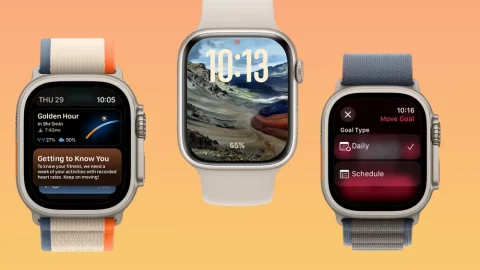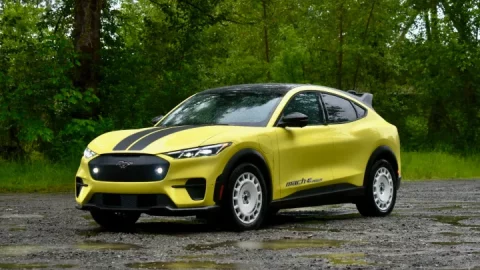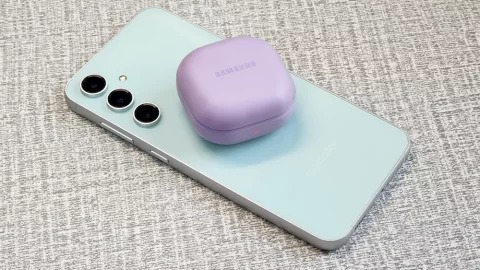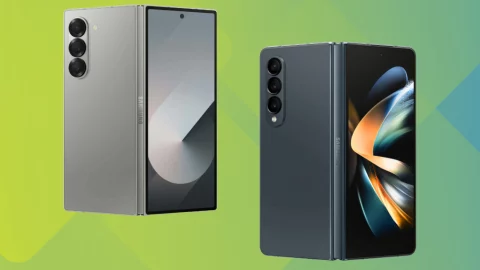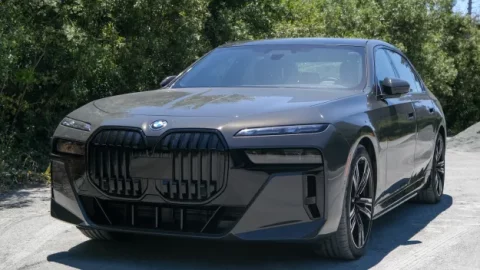![]()
During the Pixel 9 launch event, Google made a mistake. It said almost nothing about the hardware, but as soon as you do manage to get your hands on the phone, you will quickly discover that it is almost flawless. Thus, Google did all of us a disservice by limiting their discussion of AI to an hour.
Google Pixel 9: design
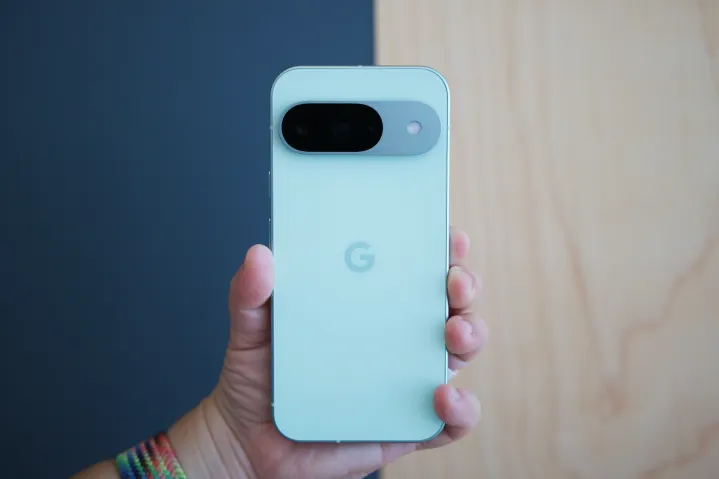
Joe Maring / Digital Trends
The Google Pixel 9 is not only the most visually appealing and well-presented standard Pixel phone to date, but it also ranks among the best-looking smartphones available right now. It is amazing in a way that Pixel phones have not always been because it manages to balance ergonomics and aesthetics perfectly, which strangely appears to be a difficult task for other manufacturers. In my opinion, pictures also do not do the phone justice because they do not capture the quality and refinement of the hardware or how great the phone feels in the hand.
It is a pleasure to hold, with the satin-finish metal chassis having just the right amount of curve to blend in with the flat Corning Gorilla Glass Victus 2 rear panel. I find that the size is perfect for me because I can use it with one hand without worrying that I will not fumble it and it fits into my pocket almost completely unseen. With Gorilla Glass Victus 2 over the screen and an IP68 dust and water resistance rating, it is as robust as you could hope. However, the metal frame of the Pixel 9 provides ample grip, making it non-slip.
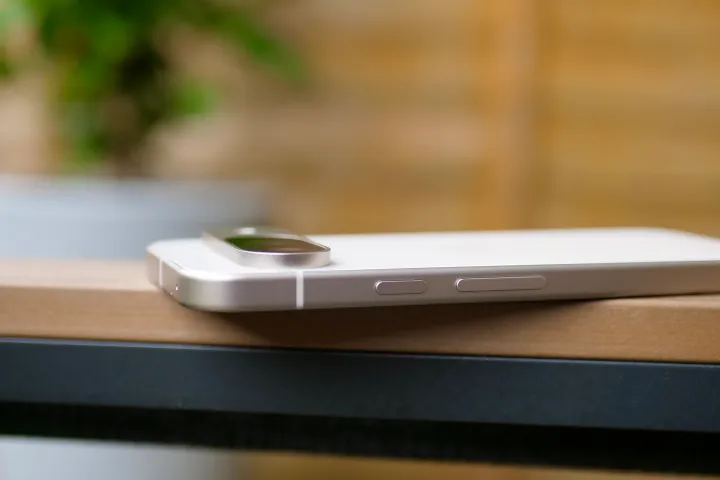
It should go without saying that the fit and finish are excellent, but this is not always the case with Pixel phones. There is not a trace of misalignment, unwanted ridges, or a less-than-perfect fit on this exquisitely crafted Pixel 9. The camera module, which has evolved from a visor into a sizable flat-top island mountain on the back of the 9, lends the sleek, understated design its unique personality. Its considerable height is undeniable, but the stadium shapes help lessen its visual impact.
I have not found the Pixel 9 to be tiresome to hold for extended periods of time because, at 198 grams, it is suitably heavy but never oppressive. I have been using porcelain, but there are other colors available as well: ossidian, peony, wintergreen, and porcelain. If I had to choose one design flaw with the Pixel 9, it would have to do with the official case rather than the phone itself. Although the soft inner layer is my favorite feature and it is really pretty, the outside gathers all the dust and lint from your pocket or bag. I would go with a different Pixel 9 case or just appreciate the excellent ergonomics of the Pixel 9 without one.
Google Pixel 9: screen
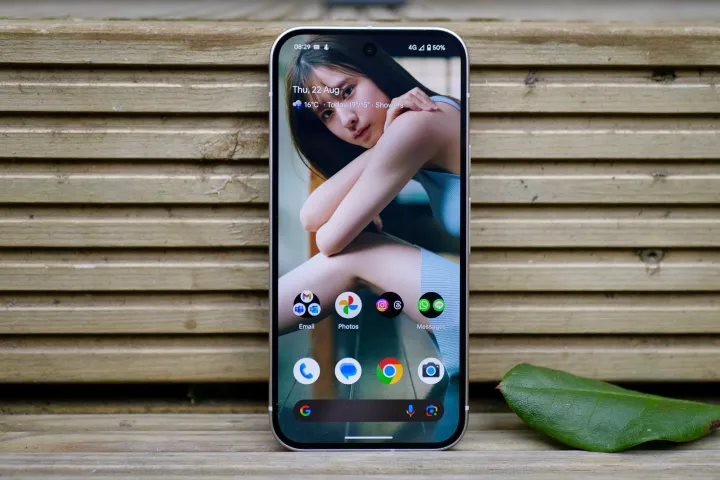
A 6.3-inch Actua screen with a maximum refresh rate of 120 Hz and a resolution of 1080 x 2424 pixels is featured on the Pixel 9. However, Google does by default set the refresh rate at 60Hz, so be sure to adjust this in the settings. The base Pixel 9 has a smaller screen than the Pixel 9 Pro and Pixel 9 Pro XL, which have higher resolutions and a dynamic refresh rate of 1Hz to 120Hz.
One of the minor complaints I have with the Pixel 9 is that the Pro phones are brighter. The stated maximum brightness and peak brightness are 1,800 and 2,700 nits, respectively, according to the official figures, but in my experience, under typical outdoor use, it does not get quite that bright. I frequently find myself turning up the brightness setting, but it is still not as bright and visible as is necessary for the circumstances, whether it is the ambient light sensor that needs to be adjusted or a low average brightness for everyday situations.
Screen brightness is one of the small issues I’ve had with the Pixel 9.
Still, that is really the only drawback. A new ultrasonic fingerprint sensor that is incredibly quick and precise is placed sensibly high up on the screen, and it is paired with an instant face unlock feature. In comparison to phone security systems on other phones, such as the Samsung Galaxy Z Flip 6 and the HMD Skyline, this one is the easiest, fastest, and most dependable Pixel security system I have used. It is also much more enjoyable to use. Additionally, Google designed an excellent haptic feedback system that is integrated into the program. In addition to being noticeable and helpful, it is delightfully tactile and soft.
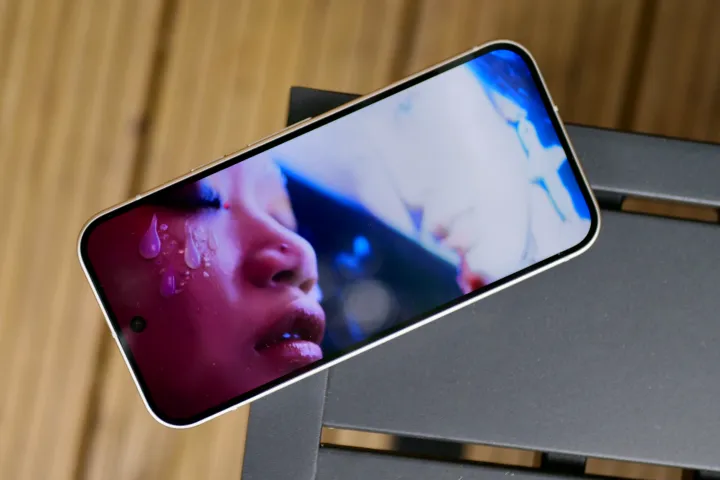
Andy Boxall / Digital Trends
I have enjoyed watching videos on the Pixel 9 aside from turning up the brightness, but what I really like about it is the responsiveness and the always-on, customizable screen. It may sound simple, but it is easy to accept slower, more ponderous versions of Android as the standard until you use a phone like the Pixel 9.
Stereo speakers provide audio, and they sound excellent up to roughly 75 percent of the loudness level before beginning to distort noticeably. Certain online video streaming services allow you to listen to spatial audio if you own a pair of Pixel Buds Pro or Pixel Buds Pro 2 earbuds. The Pixel 9 offers an outstanding audio and visual experience that is commensurate with its price.
Google Pixel 9: software and performance
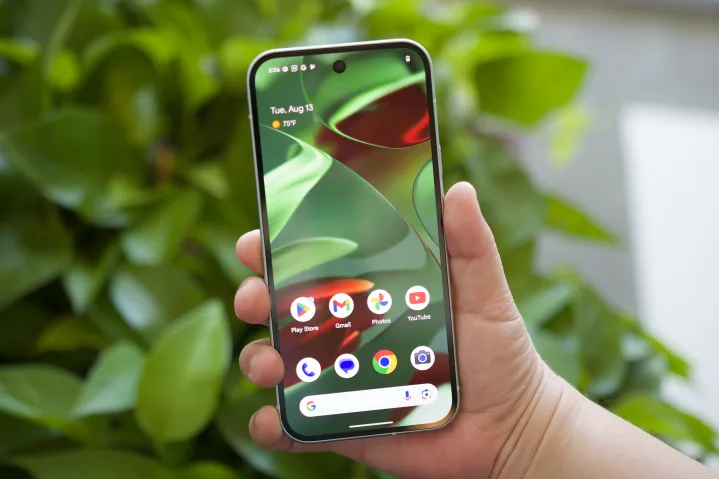
The Pixel 9 that I am reviewing has Android 14 installed, and since I started using it, it has received a few software updates. Beginning on August 22, 2024, Google will update it with significant operating system upgrades, security patches, and feature drops over the following seven years. This may irritate some, but Google plans to release Android 15 later this year using one of these significant updates. But before you lose it, consider whether you really think you will be using the Pixel 9 in 2030.
The Google Tensor G4 chip, which powers the Pixel 9, has 12GB of RAM and either 128GB or 256GB of storage. Although there have been some issues with the Tensor chips over the last few years, none of them appear to be present in this most recent version. It has not generated any unexpected heat, it has run all my apps without any reliability issues, and Android 14 performs without stutters or flaws. It’s the most fluid, smoothest, and most enjoyable Pixel experience yet.
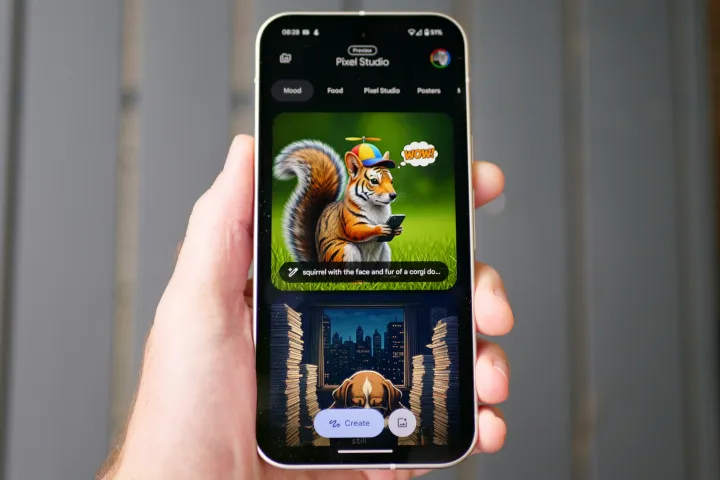
There are a couple of new preinstalled apps: Pixel Studio and Screenshots. Screenshots works like a fancy version of the screenshots folder in Google Photos. It’s searchable using AI, and your screenshots can be organized into collections. You can also take photos in the app itself, allowing you to add essential information to them. It has some usefulness, and its simple interface will encourage you to use it. But why it’s an app and not an enhancement to Google Photos, where it could be used on different devices, I have no idea.
I also have no idea why anyone would want to use Pixel Studio. It uses AI to generate images based on your descriptions, and it’s vaguely fun for a few tries. There does seem to be a way to upload your own photos for the AI treatment. Still, all my photos were flagged as inappropriate (I wouldn’t mind, but none of the photos were inappropriate), so I couldn’t try it. Other tests have produced some very questionable images. It’s an app that’s good for showing AI’s “imagination,” and I’m sure it’ll be fun for social media posts. However, aside from that use case, it’s forgettable fluff. I’d rather use the Rabbit R1’s generative AI camera feature.
Google Pixel 9: AI and Gemini

Google devoted the majority of the launch event to discussing the Pixel 9’s AI, which brings us neatly to all this talk about screenshots and Pixel Studio. Unlike the Pixel 9 Pro range, the Pixel 9 does not come with a free year of use for Gemini Advanced, so I have been using basic Gemini AI instead. Although it has replaced Assistant, it still looks to Assistant for tasks it cannot perform, such as setting alarms. With it, you can have much more in-depth conversations because Gemini comprehends and responds similarly. Gemini actually enjoys talking to itself, so if you tell it to sum up in a few sentences, it will not stop talking for a very long time.
Despite all the hype surrounding it, Gemini’s functionality can be surprisingly limited if you do not purchase Gemini Live and the Gemini Advanced bundle. It lacks the ability to translate webpages and videos, respond to system-based queries such as “How do you change your voice,” and appears to be confused when you provide it a link. It excels at providing answers to queries based on data collection and summarization. When I asked it to explain the Porsche 911 range from 1997 to 2004, it did so with a recommendation for the model I should get as well as some general buying advice. Although I did not think it had saved me all that much time or effort, it was a good starting point for additional research.
I asked Gemini to help me create driving routes to different places, always avoiding small roads, but I never got Gemini’s Google Maps query to work. It returned text suggestions if I did not use Google Maps, but I would still need to search for the route there. I asked it to change its voice, but it did not understand, and I can not figure out how to make it sound less masculine. It’s all rather disappointing. I am aware that some people find the summarizing and organizing features of AI useful. However, Gemini has consistently fallen short of convincing me that using its services has saved me a ton of time or produced better results than a few minutes of searching.
Though I am not a skeptic of AI, I do believe that, at least in this initial phase, we are being given a little bit of a raw product. Not only is Google to blame, but Samsung is also to blame for shoving mediocre AI onto our phones. However, Galaxy AI is presented in a way that makes sense to me and makes me see how it could be useful to me in specific situations. For example, rather than directing me to the Translate app, Gemini tried translating a conversation for me, which was a long-winded disaster. Galaxy AI clearly defines what tool you should use, and it doesn’t try to push you into using Bixby (shudder). The AI-enhanced weather app is another great example of “who cares.” Yes, it is pretty to look at, but it tells me the weather just like dozens of other apps.
Gemini is not a reason to purchase or utilize the Pixel 9, despite what Google may like you to believe otherwise. Remember that Gemini is not exclusive to the Pixel 9; in fact, it is compatible with a wide range of excellent Android phones as well, so if you would like Gemini but can not get a Pixel, you are not “missing out.” The question is then whether you are really missing out. Although Gemini has a lot of potential and is capable of much more than Assistant, it is not yet revolutionary, at least not in its current, free version. To refer to Gemini and its tricks as gimmicks would be unfair, but many of their features are still novelty-worthy, and the more polished ones might not be used very often.
Google Pixel 9: camera
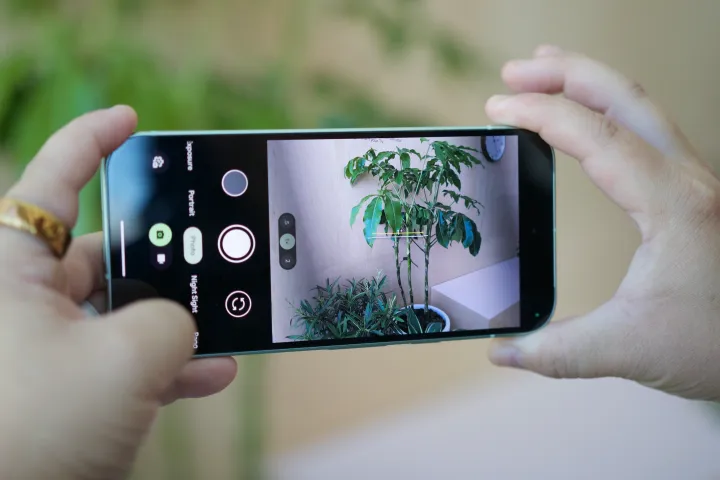
A 50-megapixel primary camera and a 48-megapixel wide-angle camera with a macro mode are located on the back of the Pixel 9. Optical and electronic image stabilization, a spectral sensor for color accuracy, and laser autofocus all support the camera. Although there is not an optical zoom or telephoto camera, the camera app offers an 8x Super Res Zoom mode in addition to a 2x shortcut. There is also autofocus on the 10.5MP selfie camera.
With the Pixel 9, I have taken over 160 pictures, and not a single one has let me down—that is, there have not been any instances where the camera’s actions have resulted in a subpar shot. The primary and wide-angle cameras produce vibrant, detailed photos that may appear slightly processed, but in my opinion, this makes them never lifeless or unimpressive. All of this guarantees that I can look for more imaginative ways to use the camera and that I have faith in it.
You have to crop the image to reveal the evidence of digital manipulation, even at a 2x zoom. It is not terrible, even though I did not think the 8x Super Res Zoom would be that good. I believe Google ought to have included a telephoto camera with the new camera module in light of the price increase.
I have been playing around with Magic Editor’s new Reimagine feature, which lets you alter scenes based on your imagination, and the Action Pan mode, which adds motion blur to moving objects. That pretty much sums it up nicely: I have not found an occasion or setting in which to utilize Google’s AI-assisted group photo mode, Add Me.
With the Pixel 9, I have taken over 160 pictures, and not a single one has let me down.
You will not notice many differences between the primary cameras on a Google Pixel 8, but how does the new wide-angle camera perform? It is a true upgrade with less noise, slightly more accurate colors, and more natural white balance. On this subject, the Pixel 9 Pro is another $200 more, and aside from the telephoto camera, it is otherwise very similar to the Pixel 9. Before making a decision between the two, ask yourself whether you really need it, as the cheaper Pixel 9 is a brilliant camera phone.
Google Pixel 9: battery life and charging
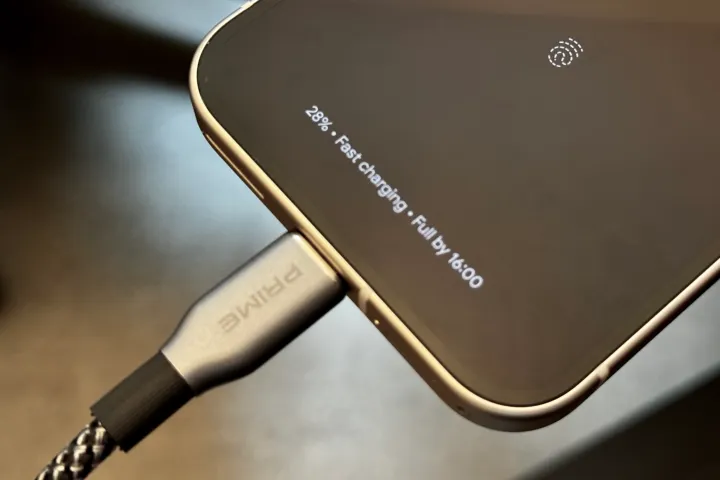
How pleasantly surprised I am with the Pixel 9’s battery life. The battery life of the previous models was mediocre at best, but the Pixel 9 offers better than this. It is not great, but it is more than sufficient for everyday use. Although the 4,700mAh capacity cell may seem small, it ends the day with about 30% left on days when I do not play games but use the GPS, camera, media, and apps for a total of four hours of screen time.
No, unless you are using it extremely infrequently, I do not think it will last for two full days, but there is more than enough battery life for a full day of use—including gaming. Behind this is an obvious efficiency improvement. A 45-minute YouTube video at 1440p resolution barely uses 5% of the battery, and a 30-minute session of Asphalt Legends Unite uses about the same. That’s excellent performance, and even during its early getting-to-know-me phase, the Pixel 9’s battery has never fallen to just a single day.
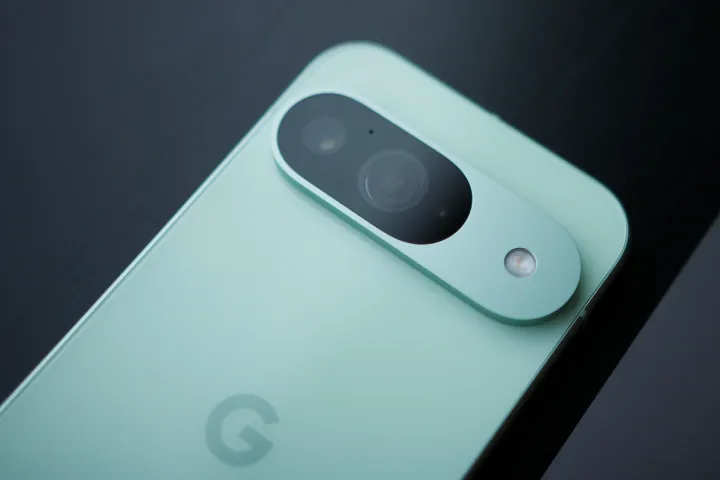
A wall charger is not included with the Pixel 9 package. In addition to Qi wireless charging, it has 45-watt charger support with a maximum output of 27 watts. With regard to the Pixel 9 series, Google has not embraced Qi2 wireless charging. According to Google, a suitable charger can reach 55% battery charge in 30 minutes. In my experiments, the battery charged to 53% in 30 minutes with an Anker Prime wall charger and its USB C cable, and it reached full charge in 92 minutes.
Google Pixel 9: price and availability
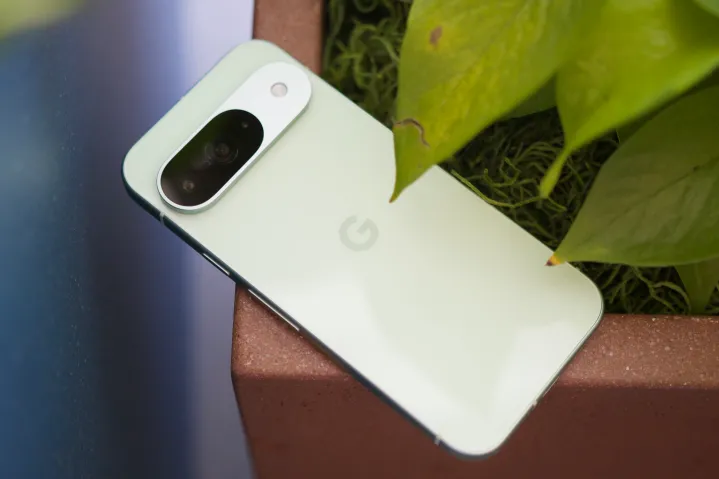
The Google Pixel 9 is available for $799 for the 128GB model and $899 for the 256GB version. Depending on when you order, there may be price changes. The device was released on August 22. Although this costs $100 more than the Pixel 8, you can actually see where Google has made improvements to the phone — from the materials and design to the performance and longevity of the battery.
The price increase puts the Pixel 9 in line with its primary Android competitors, the Samsung Galaxy S24 and the OnePlus 12, as well as the iPhone 15. The Galaxy S24 has a telephoto camera, but the OnePlus 12 has more RAM, storage, and faster charging for this price. You should consider the Samsung Galaxy S23 FE, the Nothing Phone 2, or the OnePlus 12R, which are all excellent options for a little less money.
Then there is the matter of the cheaper Pixel 8a, which is still available, along with the Pixel 9 Pro and Pixel 9 Pro XL. The Pixel 9 retains its processor and software, but its cameras, screens, and battery life all change. As such, consider carefully what features you will need from your Pixel phone in the years to come. The Pixel 9 is still the best of the Pixel lineup for those who are not infatuated with the camera, even though its new price has forced it into new markets and given it many more alluring competitors.
Google Pixel 9: verdict
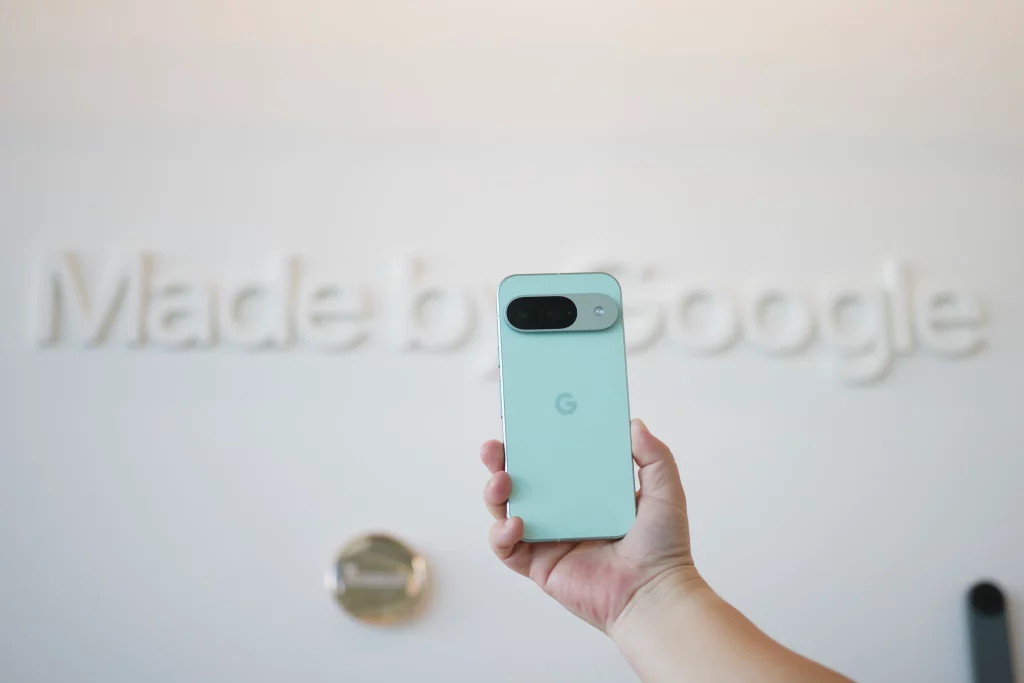
I am sure the appeal of the Pixel 9 remains the same, much to Google’s dismay. The software is the best interpretation of Android, the camera is excellent, and for the first time ever, the hardware meets and even exceeds the competition. Gemini AI is not a reason to buy or upgrade any phone yet, as its functionality often only caters to quite specific situations or is frivolous in nature — and therefore won’t be used all the time either. Gemini isn’t listed as a pro or a con in our review, and that sums up the way I feel about it in general. It’s not great, and it’s not terrible. It’s just there.
The Pixel 9’s appeal as a phone is higher than ever then, but unfortunately, so is its price. Alongside the OnePlus 12 and Galaxy S24, it struggles to compete on charging and camera functionality, and if you chose one of those over the Pixel 9, I don’t think it would be a poor decision.
I’ve enjoyed the Pixel 9 a great deal.
Purchasing the Pixel 9, however, would not be a bad choice either because it is truly the best model yet. I have been really happy with the phone, and it is encouraging to see that Google has fixed some of the issues that the Pixel series had for a while. I would be extremely satisfied with the Pixel 9 and would highly recommend it if I did not have to change my SIM card.



